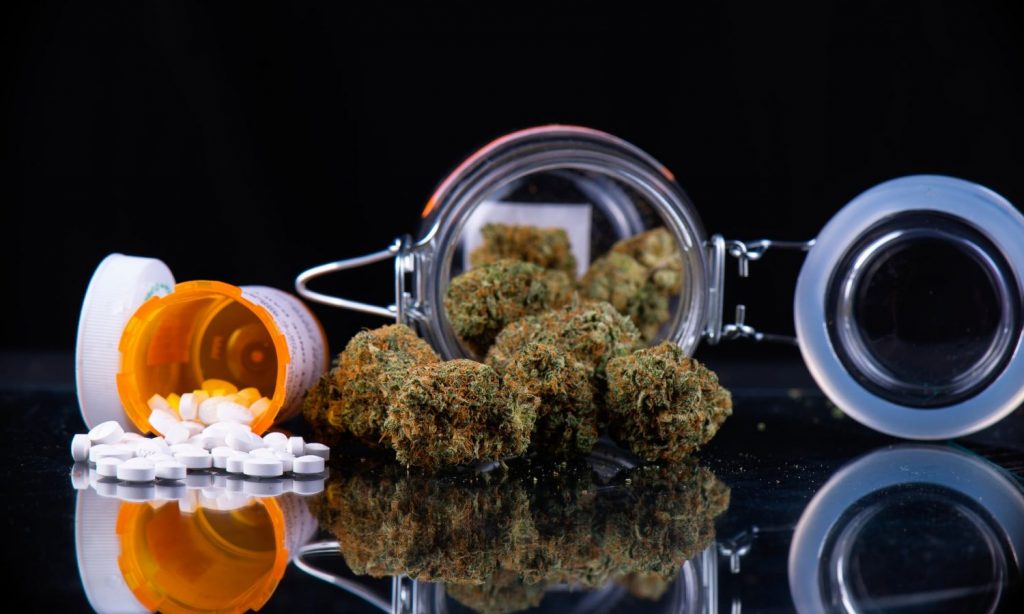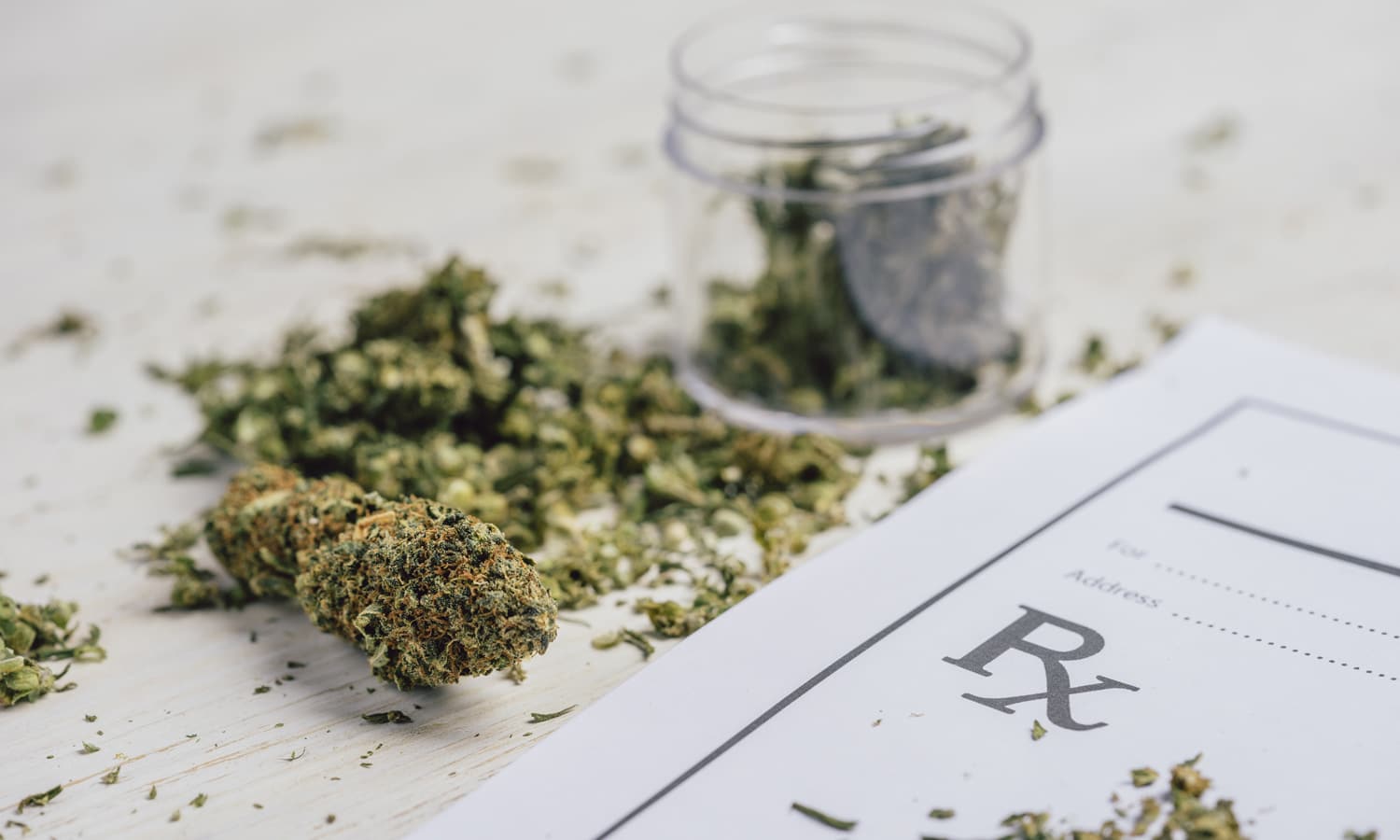It’s understandably difficult for most people to make an informed decision about whether marijuana is the next medical breakthrough or another ill-fated attempt at a silver bullet.
By Dr. Mark Calarco, National Medical Director for Clinical Diagnostics at American Addiction Centers.
Once considered the drug of choice for laid-back stoner types (think: Cheech & Chong), marijuana has garnered a new reputation as a panacea for everything from chronic pain and epilepsy to minimizing Alzheimer’s, Parkinson’s and PTSD symptoms, chemotherapy side effects and anxiety. In fact, in 2018 the FDA approved the drug Epidiolex (cannabidiol), a cannabis derivative, for certain types of seizure disorders. While once stigmatized as a “gateway drug,” cannabis and its derivatives are now legal for medical and/or recreational use in 47 states. Interestingly, this is in direct violation of federal law that still classifies marijuana as a Schedule I controlled substance.
With a substance steeped in so much controversy, it’s no surprise there’s an overwhelming amount of conflicting information about marijuana’s benefits and risks—both documented and perceived. The truth is, it’s a strong catch-22. While some data shows that marijuana can be beneficial, it is certainly not a cure-all, nor is it risk-free.

To help shed some light on the cannabis debate, here are some facts you should know:
- Marijuana may have helped to curb opioid prescribing. Numerous studies show that states where marijuana is legal for both medicinal and recreational purposes have significantly lower opioid prescribing rates. Patients not only needed fewer opioid prescriptions, but they also filled fewer daily doses—as much as 2.211 million daily doses less in the states with a medical cannabis law (MCL) from 2010-2015. This is especially true for hydrocodone (Vicodin) and morphine, which saw 26.8% fewer and 20.7% fewer daily doses filled, respectively.
- But, it hasn’t curbed the opioid overdose epidemic. While early research examining data from 1999-2010 suggested that states with MCLs had a nearly 25% lower annual opioid overdose mortality rate, more recent data shows it may have had the opposite effect. In fact, when Stanford researchers took a more extended look through 2017—including states that had legalized medical marijuana since the original study—the trend actually reversed with a 23% higher overdose mortality rate in states with MCLs over that period of time.
- Marijuana could be an alternative to opioids for pain management. There is some evidence that medical cannabis can be beneficial in managing chronic pain. While it will unlikely never be adequate on its own, marijuana could be an adjunct treatment that allows people to use fewer opioids. In some studies, medical cannabis use resulted in a 64% lower opioid use, and 40% of patients even stopped filling opioid prescriptions altogether within 18 months. Patients who have seen the benefits of medical cannabis overwhelmingly report that cannabis provided relief on par with other medications, and over 80% said cannabis alone was more effective at treating their condition than taking cannabis with opioids.

- But, it could cause other issues. Other studies have directly refuted these claims, showing no evidence that cannabis use improved patient outcomes, in fact just the opposite: patients had greater pain and were less effective in self-managing pain. Even more troubling, compared to opioid use alone, opioid/cannabis co-use has shown to contribute to greater anxiety and depression symptoms, along with problems with tobacco, alcohol, cocaine and sedative use.
- Marijuana is perceived as “safer.” The one clear benefit of marijuana is that a patient can’t overdose and die, as they might with opioids. Aside from that, studies have shown patients experience fewer side effects with medical cannabis than with opioid use, which contributes to an improved quality of life and more social and physical activity for patients. And, for years there’s been a perception that marijuana is less physically addictive than other drugs, which contributes to the notion that it’s a “safer” drug with less stigma.
- But, evidence shows it may lead to greater disposition for other substance use for some. While not as addictive as heroin or cocaine, some people develop marijuana dependence, resulting in withdrawal symptoms. This is more common in those already on the spectrum of addiction, those with a predisposition to addiction or who have hereditary, family history or environmental factors that put them at greater risk for substance use. There is also evidence that marijuana use is also clearly associated with increased risk of other substance use disorders. In addition to alcohol use disorder, adults who use marijuana are 85 times more likely to use cocaine, and nearly 45% of cannabis users progressed to other illicit drug use at some point in their lives. Those who start using marijuana as children are 17 times more likely to develop a cocaine habit, nearly 60 times more likely to use other illicit drugs, 2.4 times more likely to have alcohol dependence and have substantially higher odds of attempting suicide. With more information about the personalized genome and how specific individuals respond to other medications, we might be able to determine how the patient would respond to medical marijuana treatment. But without that available right now, it’s just trial and error.

With all the controversy and conflicting information, it’s understandably difficult for most people to make an informed decision about whether marijuana is the next medical breakthrough or yet another ill-fated attempt at a silver bullet. We must also be mindful that for some people, depending on their genetic make-up, cannabis is not only addicting but can also cause them to experience psychiatric symptoms, such as paranoia and schizophrenia-like behavior. It’s critical that we understand how people process or metabolize marijuana and its derivatives. Without more research in this area, it’s still a guessing game in terms of efficacy and safety.
RELATED: Science Still Confused Over Whether Marijuana Can Tame Opioid Epidemic
Complicating the issue, it’s extremely difficult to conduct proper clinical research because of strict government regulations and the fact that marijuana is still a Class I Controlled Substance—illegal according to the federal government. That also makes doctors reluctant to recommend it, out of fear they may lose their licensing with the Drug Enforcement Agency.
Not to mention, with no regulations in place to standardize cultivation, preparation and dispensing/dosing guidelines (pesticides, mold and other contaminants have all been problematic), this could potentially create a serious safety issue. Are you getting what you think you’re getting? There’s really no way to be certain.
All of this points to a “buyer beware” situation and should be a caution flag for anyone who uses or is considering the use of marijuana for medicinal or recreational purposes.
This article originally appeared on Benzinga and has been reposted with permission.


